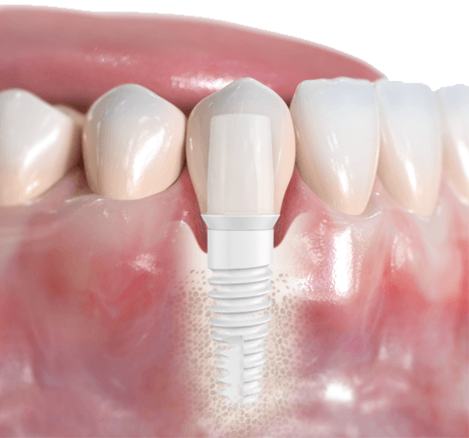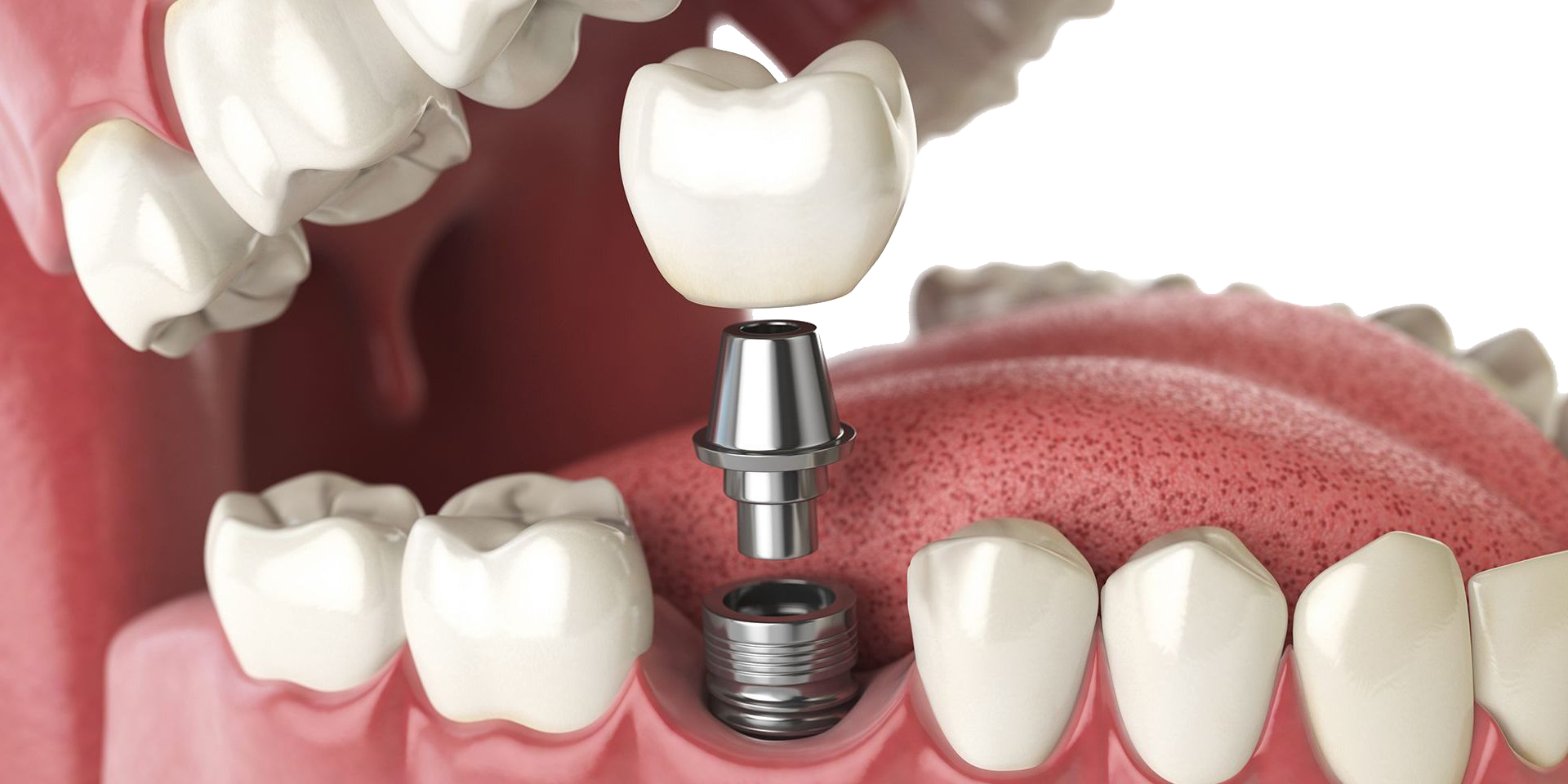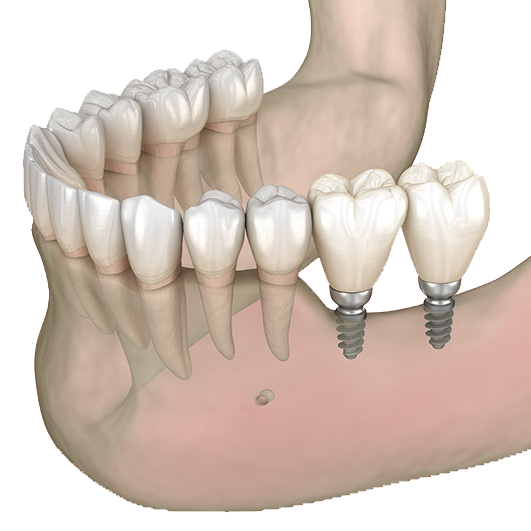Ceramic Implants (Natural Implants)
Ceramic implants are dental implants that do not contain metal. There is no allergic reaction to ceramic implants and no sensitivity to temperature is felt. Ceramic implants have an aesthetic aspect because they resemble the tooth color.

The Titanium Implants
Titanium implants are made from titanium or alloys. Titanium implants are tissue friendly and very durable. It is easy to fit into the mouth and is not affected by the fluids in the mouth.

Mini Implants
Titanium implants have similar characteristics. The only difference is that they are smaller in size.

Is it difficult to apply a dental implant?
Dental implant surgery is easily applied without pain by applying local or general anesthesia. With the new implant designs and the advancement of technology, implant surgeries have become very easy.
Why are implant prices different?
Implant brands can be at different prices according to their experience, quality and facilities.
Things To Know
Frequently Asked Questions About Dental Implants
The number of implants to be installed is determined by the number of teeth lost, the tooth-free area and the planned prostheses. As in cases where implants are made instead of removing each tooth, implants can be made at intervals to the designated areas under the guidance of a careful clinical and radiological examination. It is necessary to use a series of implants that will ensure that a healthy and usable prosthesis is made. As can be done individually, fixed prostheses can be made on patients with all missing teeth by applying 6-8 implants for one jaw.
Do not eat or drink anything for 2-3 hours until the effect of local anesthesia has passed, and do not consume very hot and cold foods on the first day. The buffer placed to stop the bleeding is removed after one hour. On the first day, bleeding can be seen in the form of a leak In order not to increase the bleeding, care should be taken not to rinse and spit. On the first day, ice is applied to the area where the implant is placed at five minute intervals so that the swelling is not too much. Medications prescribed by the physician are used in regular and appropriate doses. The first day of recovery is rest with attention to these recommendations, and the first few days are no smoking or minimized. During the healing process, a lot of attention should be paid to oral hygiene. The part of the implant seen in the mouth should not be applied with force with the tongue or anything else. Care should be taken not to open the stitches that are thrown during the implant surgery. Stitches will be removed by your jaw surgeon after 7-10 days You can visit your jaw surgeon at regular intervals until the implant is healed. A temporary prosthesis can be made on the same day as the operation on the implant, and in some cases it may be necessary to wait a while for the prosthesis to be made. This time varies depending on the area where the implant is applied, the quality of the bone, and advanced surgical requirements such as bone powder applications (2 to 6 months).
In the past, bridge prostheses were applied instead of the teeth removed. Although crown and bridge porcelain prostheses are a treatment method that has been done for many years and is still applied today, the teeth next to the teeth drawn to make the bridge need to be cut down. In contrast, in implant treatment, it is possible to fill the tooth-free cavities without needing to perform any procedure on healthy teeth. In addition, the dental implant protects the bone by preventing bone melting in the area taken after the tooth is extracted. Implants are more comfortable than bridge prostheses to ensure oral hygiene.
Before the implant operation is performed, all the teeth in the mouth are evaluated with a detailed clinical and radiological examination. The teeth that need to be removed. Implant planning is made according to the teeth that can remain in the mouth with healthy or other treatments and how many implants will be made in which regions. For single tooth deficiencies, an implant is placed for each tooth. In case of more than one tooth deficiencies, the implant is planned according to the location (which tooth is extracted) and length of the tooth-free area. In these cases, an implant can be made for each tooth, as well as implants can be placed at certain intervals to allow the construction of a bridge on the implant prosthesis. At this point, it is important to make an appropriate number of implants in order to make a healthy prosthesis.
The implant can be placed immediately after tooth extraction in appropriate cases. Although the shortening of the treatment period provides great comfort for the patient, in this decision; the number of roots of the extracted tooth, the shape and size of the acquisition socket, the gum and bone support around the shooting area, whether there is an acute infection and the primary retention of the implant when placed in the bone are carefully evaluated.


